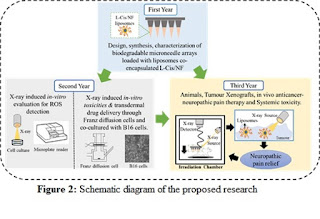INTRODUCTION
Nifedipine has been formulated as both a long- and short-acting 1,4-dihydropyridine calcium channel blocker. It acts primarily on vascular smooth muscle cells by stabilizing voltage-gated L-type calcium channels in their inactive conformation. By inhibiting the influx of calcium in smooth muscle cells, nifedipine prevents calcium-dependent myocyte contraction and vasoconstriction. A second proposed mechanism for the drug’s vasodilatory effects involves pH-dependent inhibition of calcium influx via inhibition of smooth muscle carbonic anhydrase. Nifedipine is used to treat hypertension and chronic stable angina.
PHARMACOLOGICAL ACTION
For the management of vasospastic angina, chronic stable angina, hypertension,and Raynaud's phenomenon. May be used as a first line agent for left ventricular hypertrophy and isolated systolic hypertension (long-acting agents). Nifedipine, the prototype of the dihydropyridine class of calcium channel blockers (CCBs), is similar to other dihydropyridines including amlodipine, felodipine, isradipine, and nicardipine. There are at least five different types of calcium channels in Homo sapiens: L-, N-, P/Q-, R- and T-type. CCBs target L-type calcium channels, the major channel in muscle cells that mediates contraction. Similar to other DHP CCBs, nifedipine binds directly to inactive calcium channels stabilizing their inactive conformation. Since arterial smooth muscle depolarizations are longer in duration than cardiac muscle depolarizations, inactive channels are more prevalent in smooth muscle cells. Alternative splicing of the alpha-1 subunit of the channel gives nifedipine additional arterial selectivity. At therapeutic sub-toxic concentrations, nifedipine has little effect on cardiac myocytes and conduction cells. By blocking the calcium channels, Nifedipine inhibits the spasm of the coronary artery and dilates the systemic arteries, results in a increase of myocardial oxygen supply and a decrease in systemic blood pressure.
USES
Used in treatment of hypertension,angina pectoris.
SIDE EFFECTS
Tachycardia
Loss of consciousness
Hypotension
DRUG DRUG INTERACTION
Propanolol + Nifedipinine = nifedipinine increases the hypotensive activity of propanolol
Nifedipinine + Sotalol = nifedipinine increases the hypotensive activity of sotalol.
REFERENCE
Tripathi K.D,"Essentials of medical pharmacology",7th edition,page no 333,522,535,546,547,548,549,558,573
Nifedipine has been formulated as both a long- and short-acting 1,4-dihydropyridine calcium channel blocker. It acts primarily on vascular smooth muscle cells by stabilizing voltage-gated L-type calcium channels in their inactive conformation. By inhibiting the influx of calcium in smooth muscle cells, nifedipine prevents calcium-dependent myocyte contraction and vasoconstriction. A second proposed mechanism for the drug’s vasodilatory effects involves pH-dependent inhibition of calcium influx via inhibition of smooth muscle carbonic anhydrase. Nifedipine is used to treat hypertension and chronic stable angina.
PHARMACOLOGICAL ACTION
For the management of vasospastic angina, chronic stable angina, hypertension,and Raynaud's phenomenon. May be used as a first line agent for left ventricular hypertrophy and isolated systolic hypertension (long-acting agents). Nifedipine, the prototype of the dihydropyridine class of calcium channel blockers (CCBs), is similar to other dihydropyridines including amlodipine, felodipine, isradipine, and nicardipine. There are at least five different types of calcium channels in Homo sapiens: L-, N-, P/Q-, R- and T-type. CCBs target L-type calcium channels, the major channel in muscle cells that mediates contraction. Similar to other DHP CCBs, nifedipine binds directly to inactive calcium channels stabilizing their inactive conformation. Since arterial smooth muscle depolarizations are longer in duration than cardiac muscle depolarizations, inactive channels are more prevalent in smooth muscle cells. Alternative splicing of the alpha-1 subunit of the channel gives nifedipine additional arterial selectivity. At therapeutic sub-toxic concentrations, nifedipine has little effect on cardiac myocytes and conduction cells. By blocking the calcium channels, Nifedipine inhibits the spasm of the coronary artery and dilates the systemic arteries, results in a increase of myocardial oxygen supply and a decrease in systemic blood pressure.
USES
Used in treatment of hypertension,angina pectoris.
SIDE EFFECTS
Tachycardia
Loss of consciousness
Hypotension
DRUG DRUG INTERACTION
Propanolol + Nifedipinine = nifedipinine increases the hypotensive activity of propanolol
Nifedipinine + Sotalol = nifedipinine increases the hypotensive activity of sotalol.
REFERENCE
Tripathi K.D,"Essentials of medical pharmacology",7th edition,page no 333,522,535,546,547,548,549,558,573



No comments:
Post a Comment